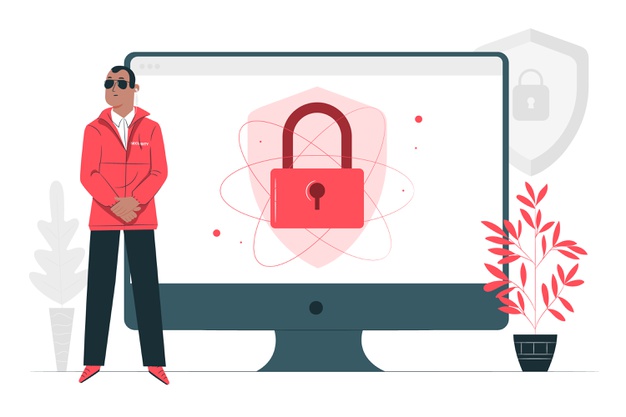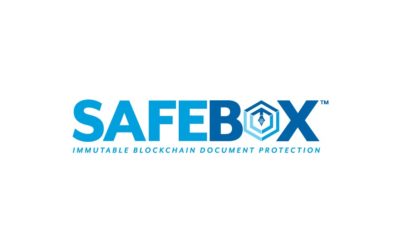Security Issues with Document Sharing Technologies
Today, the corporate world is undergoing a swift change in operations, a feat that has been greatly influenced by technological advances. Employees are using different techniques to transfer important documents to clients and fellow workers. This has revolutionized operations in the corporate sector, where information sharing and handling are way more manageable than before. With all the benefits, comes risks of great magnitude that threaten to destroy the work norm we have worked hard to achieve.
So, what exactly are these risks? Well, they come in the form of security issues due to poor document-sharing techniques. This post will analyze some workplace habits and specific technologies that are likely to cause the mentioned hazards.

Flash Drives
Arguably, flash drives are the most common devices used to transfer documents in the world today. Their popularity can be attributed to their portability, ease of use, and convenience. However, this widespread use has not gone unnoticed among people with malicious intent, such as hackers. Flash drives can easily be configured to infect company software with viruses that corrupt and steal sensitive information. Employees are advised to refrain from using the mentioned drives unless under the relevant entities’ authorization.
Sending Files through E-mails
Other than flash drives, e-mail attachments are equally popular methods of sending files among corporate employees. Sending an e-mail is easy, fast, and best of all, completely free. However, they are prone to attacks mainly because e-mails are not entirely designed to be secure.
What’s more, many people sending documents through the mentioned platform do not bother to add password protection to their files. Those that do add passwords are faced with the problem of having to remember them for each document. Therefore, employees are advised to use alternative platforms such as SAFEBOXTM when sending documents.


Use of Unauthorized Software
This is yet another significant issue facing employees around the world today. Many of these individuals willingly or unwillingly put sensitive information at risk of getting hacked by unauthorized parties using consumer-level cloud technologies. While these platforms are free and easy to use, they expose data to hackers since they lack robust security features. Hence, employees are encouraged to use company-provided document-sharing software, as these technologies are better suited to the corporate needs.
Lack of Transparency among Workers
Lack of proper visibility among employees in many companies today is likely what leads to most of the security issues outlined above. How does this come about? Well, employees may choose to go behind their supervisors’ backs and send documents using other platforms. While this may go unnoticed, it becomes a problem when these habits lead to security issues, and even then, the players may fail to present themselves. It would help if workers used legitimate platforms to share information. In case of problems of any kind arise, the individuals involved should come forward for the root cause to be identified and fixed accordingly.
Above are some of the workplace habits that lead to security risks. How about the implications of these habits? What are some of the biggest threats to file security?
Next, we will take a look at some of the file sharing policies that are likely to attract to cyberattacks and methods of mitigating these issues.

The biggest threat to file Security, Personally Identifiable Information (PII)
First off, what is PII? Well, that’s an easy question and can be inferred from the acronym itself. In simple terms, it is data that can be used to identify a specific individual such as social security numbers, mail addresses and phone numbers.
Personally Identifiable Information has long been considered to be limited to discrete data such as those mentioned above. However, the growth of the IT industry has widened the definition and scope of information considered as PII. For instance, social media posts, IP addresses, login IDs, and digital images are now PIIs.
How exactly is PII related to file sharing security issues?
A while back, Elastica sought out to investigate 100 million files shared on global cloud platforms in a bid to identify potential security threats. The results of the study were published by Digital Guardian.
The outcome of the Elastica survey served to show the height insecurity in cloud software. Specifically, the analysis showed alarmingly high rates of PII circulating on the mentioned applications.
On average, an employee shares about 2037 documents on the cloud, of these, 20% were found to contain PII. Breaking this down, it basically means that with each file being shared on the platform, the chances of PII being involved are high.
You might think that these documents are shared with some sort of malicious intent, this is not the case. According to the data, of the 85% risks originating from PII, only 5% were from intentional malpractices. What’s more worrying is the fact that the remaining 80% came from PII shared unintentionally or accidentally.
On the other hand, hackers were responsible for about 12% of the risks and the last 7% from inside jobs involving corrupt employees.
The extensive investigation by Elastica is critical in showing just how employees are responsible for their misfortunes due poor document sharing policies that end up exposing them to risk. These dangers end up having negative legal implications for the firm since the info can be used for corporate espionage, cybertheft, and many other crimes.
Be that as it may, many employees do not understand the implications of cyberthreats leave alone the factors that are likely to contribute to such complications. In this regard, companies need to make it compulsory for employees to be well versed in latest trends in the cybersecurity sector. This will ensure that employees are well aware of the information they are authorized to share and not to share on cloud-based platforms.
Despite the security integrated with document sharing software, criminals can still exploit the user-friendly interface in search of weaknesses to exploit. Therefore, workers should always be ready for such situations.
With this in mind, the section below is dedicated to guiding companies on the best methods to promote healthy file sharing practices in the workplace
Solutions to File Sharing Security Issues
- Reviewing and Updating Existing Policies
The first course of action useful in charting the roadmap to secure document sharing is updating existing policies to ensure they are at par with current trends. If found to be inefficient, then new guidelines should be devised.
What’s more all employees should be well versed with the new policy and the rules and regulations involved. Workers need to understand how to share information without exposing sensitive company data.

- Cybersecurity Training
Cybersecurity training is essential in helping employees comprehend the reality about cybercrime, and how it mostly happens due to accidental reasons.
It all starts in the company IT department as this is the field well versed with cybersecurity. The mentioned team needs to verify the safest apps for employees to use. Afterward, the entire firm needs to be trained on use of the verified software. Furthermore, sharing of personal information should be completely prohibited. This is a critical gamechanger for corporations seeking to safeguard private information.
- Cybersecurity Software
The best way to deal with issues brough forth by technology is to use the very same technology. This is where cybersecurity software comes in handy. Despite the fact that file sharing software comes with inbuilt security, it’s better to supplement this with specialized cybersecurity applications.
Apart from the strategies mentioned above, company officials also need to ask themselves several questions in regards to the existing document sharing policies.
How secure are on-site and off-site workstations?
This is the most fundamental question critical in enhancing document security since everything is done from a workstation. Therefore, it goes without saying that these stations have to be secured at all times. Questions such as the number of employees with access need to be properly answered.
How many documents are shared on a daily basis?
Defining the number of documents each employee uploads to the cloud or any other software in use is useful in estimating the security risks associated with these files. Dangers related to unintentional errors should be taken into account since they are the most prevalent causes of cybersecurity problems.
How many people have access to shared files?
The employee sharing the files is responsible for the number of people allowed to see the information conveyed. Regardless, the specific details concerning the people who viewed the files should be recorded for future reference in case any complications arise.
Are we prepared in case of an emergency?
If you apply all the policies associated with secure document sharing, the chance of an attack happening is still likely albeit minimal. Therefore, you need to ask yourself, are you prepared? If so, what will you do in such instances?
Conclusion
It is no secret that digital file sharing platforms such as SAFEBOXTM are here to stay. Employers need to take the opportunity to fine tune their security practices and ensure company information is only shared with the relevant parties. This way, document integrity will be maintained and businesses will not be exposed to threats such as corporate espionage.
Trending Technologies 2020
Notary Public: 5 Tips to Increase Productivity
A notary public's job is a complex one. The work involves witnessing and taking care of relevant documents. As there is much paperwork required in this job, taking care of everything can be a little overwhelming. This is where blockchain comes into the picture....
Why do you need MetaMask?
MetaMask is a cryptocurrency wallet that allows you to interact with the Ethereum enabled distributed applications(Dapps) without having the need to run the Ethereum node. It is available as a browser extension that allows smooth interaction between the web...
SAFEBOX Pricing
SAFEBOX makes use of cloud storage and blockchain technology to facilitate the work related to records. Our platform takes care of signing agents, attorneys, medical professionals, title companies, automobile dealers, escrow companies, and many more who need to store...
5 Ways Blockchain technology is transforming the signing agent’s work
The blockchain's primary features have proved to be a great asset in improving the signing agent capabilities. With the help of blockchain technology, a signing agent can do most of the work remotely. Blockchain technology has transformed the signing agent's work in...
List of services for which a Notary Public can charge fees?
There are different kinds of policies and regulations for every state regarding the fees of the notaries and services a Notary Public can charge. Some of the common services that notaries can charge for are as follows: Copies Notaries, for fixed fees, can also certify...
Our Latest Updates

How Can Blockchain Technology Improve Data Storage?
Decentralized Cloud Storage Cloud storage systems maintain data on remote servers that are accessible from the internet. However, unlike conventional cloud servers, decentralized cloud storage does not keep user data on a single centralized server. A decentralized...
What are the two main ways to store a document on the blockchain
Cryptocurrencies such as Bitcoin have shown the use of blockchain technology for different forms of money and currency. Although they store transactions within blocks, we can no doubt extend this data beyond financial data. In theory, we can store any form of data on...
Notary Public: 5 Tips to Increase Productivity
A notary public's job is a complex one. The work involves witnessing and taking care of relevant documents. As there is much paperwork required in this job, taking care of everything can be a little overwhelming. This is where blockchain comes into the picture....








